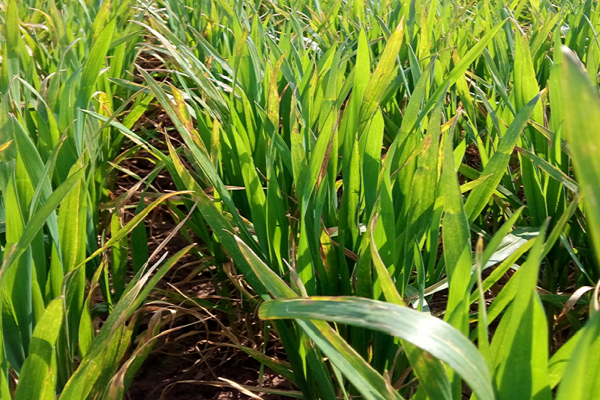Barley Yellow Dwarf Virus – forward planning without neonicotinoid seed treatments
23 August 2019The loss of the neonicotinoid seed treatments will have an impact on the management of BYDV in cereals this autumn and next spring.
Consequently, there will be a reliance on the use of pyrethroid insecticides for the management of aphids and the transmission of BYDV into cereals. But there is an additional worry about resistance to this group of chemistry and it is important to recognise that there are confirmed cases of grain aphids in Scotland with resistance to the pyrethroid aphicides. As a result over-reliance on pyrethroid aphicide sprays is a risk as grain aphids may not be adequately controlled, which will elevate the risk of BYDV.
The warm conditions in 2019 have suited aphids well and, as a consequence, Barley Yellow Dwarf Virus (BYDV) has been seen in many winter and spring cereals this season. Aphids have been building up numbers all year in crops and volunteers, and there is a high risk of cereal aphids picking up BYDV from infected plants and spreading the virus to cereals that will be drilled this autumn.
Crop losses to BYDV vary hugely. Late infections might result in little more than a few random yellow-tipped leaves scattered throughout a crop and might do little to reduce yield potential but at the other end of the spectrum, early infection in winter cereals can trim between one and 2.5 tonnes per hectare from yield.
Aphids have two ways of getting into a newly drilled crop – flying in or directly walking in. The most effective way of managing the ‘green-bridge’ of aphids on volunteers and stubble is to kill off any aphid host plants before drilling. Ideally, stubble from the previous crop should be desiccated with a herbicide, ploughed in 7-10 days later and left for another 2 weeks before sowing the next crop. This will ensure that any aphid host plants will be dead and any aphids on them will have starved to death. Alternatively, ploughing in the stubble and delaying drilling for 4 weeks allows enough time for the previous plants to die along with the aphids.
Both of these approaches will reduce the threat from walking aphids by killing off their host plants that could keep the aphids (and BYDV) ticking over. Aphids are quite resilient and can work their way up to the soil surface after ploughing, so killing off the plants is essential so that they won’t have anything to feed on underground. Sometimes where the gap between desiccating or ploughing down the old crop and the new crop emerging is too short, BYDV is visible in lines that tie in with the cultivation lines where the stubble has been ploughed in. Aphids flying into the crop create a different challenge so to manage these after crop emergence, aphicide sprays are the only option.
A combined approach of tackling the ‘green-bridge’ for the walking aphids and using an aphicide to target the flying aphids is the only option available this autumn to reduce the risk of BYDV. Reducing the availability of BYDV reservoirs in cereals and volunteers/stubble, and in aphids overwintering on winter cereals will reduce the risk to spring cereals, where a pyrethroid aphicide spray at early crop emergence is again the only option currently available, and this may not take care of the grain aphid due to widespread resistance.
Because of the resistance issue in the grain aphid, try to avoid the use of pyrethroid aphicides on cereals for BYDV unless necessary. Treatment is only economically justified if aphid colonies are visible on the leaves in the autumn rather than just individual aphids so using this colony threshold as the trigger for an aphicide treatment helps to reduce the cost and impact of unnecessary sprays.
Andy Evans and Fiona Burnett, SRUC, for the Farm Advisory Service
Sign up to the FAS newsletter
Receive updates on news, events and publications from Scotland’s Farm Advisory Service

